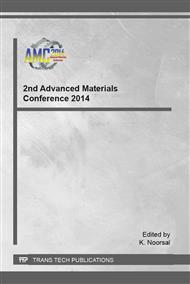p.571
p.579
p.583
p.588
p.593
p.598
p.603
p.608
p.612
Properties Evaluation of Micro-Crystalline Cellulose and Starch as Bio-Filler in Rubber Compounding
Abstract:
Effects of filler loading on the mechanical properties of Epoxidised natural rubber (ENR) filled with bio-fillers were studied. The compounds with different filler loadings (0, 30, 50, 70 phr) were prepared in a Haake internal mixer. Result showed that the viscosity of the compounds increased with filler loading and exhibited longer cure time with higher loading of the bio-filler. The mechanical properties of starch-filled vulcanisates present better tensile strength at 50 phr when compared to micro-crystalline cellulose (MCC) filled vulcanisates at similar filler loadings. The scanning electron microscopy (SEM) of tensile fracture surface of 50 phr starch-filled vulcanisates illustrated a homogenous distribution in comparison with MCC-filled compounds.
Info:
Periodical:
Pages:
593-597
Citation:
Online since:
January 2016
Authors:
Keywords:
Price:
Сopyright:
© 2016 Trans Tech Publications Ltd. All Rights Reserved
Share:
Citation:


